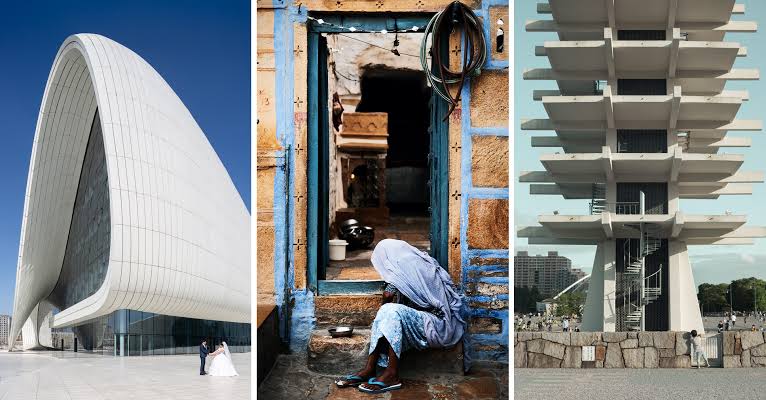Explore the art of architectural photography and learn how to capture the essence of buildings and structures. Discover key techniques for composition, lighting, lens choice, and post-processing, and overcome challenges to effectively document and present human-created structures.
Capturing the Beauty of Man Made Structures Through Photography
Architectural photography is an art form focused on capturing the beauty of buildings and structures crafted by humans. Its not about snapping pictures; its about showcasing their design, purpose and the feelings they evoke. This style of photography is essential in areas such, as real estate, historical preservation and creative endeavors. In this article we will delve into the significance of photography the techniques involved and how photographers can skillfully document and present human made structures.
Recognizing the Value of Photography
Photography serves a range of purposes, from practical documentation to artistic expression. It plays a role in highlighting the design and functionality of buildings shaping perceptions and safeguarding architectural heritage.
Capturing Structures: Architectural photography serves as a record of buildings. It's crucial for real estate listings, architectural showcases and historical documentation. High quality photos can showcase the features and details of a structure, making them valuable references for future projects or preservation efforts.
Showcasing Designs: For architects and designers, photography is a powerful tool for showcasing their work. Well framed pictures emphasize the aspects of a design, showcasing its beauty and functionality. These images are commonly used in portfolios, publications and promotional materials.
Artistic Interpretation: In addition to its applications architectural photography can also be an outlet for creativity. Photographers can experiment with the play of light, shadow and shapes to craft striking images that offer perspectives on familiar buildings. This artistic approach can deepen public appreciation and understanding of architecture.
Key Techniques in Architectural Photography
To truly capture the spirit of a structure it takes a blend of abilities and an eye for aesthetics. There are various methods crucial, for producing top notch photos of buildings.
Understanding Composition
In architectural photography composition plays a role. It entails organizing elements in the frame to produce an image that's both visually captivating and informative.
Utilize Lines. Integrate lines to direct the viewers gaze throughout the photo. Architectural details like walkways, edges or structural components can form lines that lead to points of interest enhancing the perception of depth and perspective.
Think About the Rule of Thirds. Use the rule of thirds to position key elements slightly off center resulting in a composition. This approach helps achieve balance in the image while highlighting features of the building.
Mastering Lighting
Lighting plays a role, in photography influencing the perception of shapes, textures and colors. Here are some tips to consider.
1. Take Advantage Of Light. Capture your photos during the hours shortly after sunrise or before sunset. When the light is gentle and warm. This can highlight the features and intricacies of the architecture while reducing stark shadows.
2. Play Around With Shadows. Shadows can bring and volume to architectural shots. Try out angles and times of day to see how shadows interact with the building.
Choosing the Right Lenses
The selection of a lens plays a role, in influencing the results of photos.
Wide Angle Lenses: These lenses are commonly employed to showcase the extent of large structures or indoor spaces. They provide a wider viewpoint and are effective in highlighting the majesty of a building.
Tilt Shift Lenses: Tilt shift lenses aid in correcting distortions that may arise when using angle lenses. They offer control over the positioning of lines ensuring that buildings look straight and faithful to their intended design.
Attention to Detail
In architectural photography precision is key. Noticing features can showcase the skill and creativity behind a structure.
Emphasize Textures: Photograph textures like surfaces, patterns and finishes. These details enhance the buildings appearance and underscore the design quality.
Showcase Features: Zoom in on architectural details like intricate exteriors, cutting edge design elements or practical aspects. These aspects often shape a buildings personality and offer a glimpse into the architects imagination.
Post-Processing Techniques
The stage is crucial in photography as it enables modifications and improvements to reach the desired end result.
Correcting Perspective: Utilize software to fix any perspective distortions and ensure that lines appear straight. This correction helps uphold the accuracy of the depiction.
Refining Features: Adjust the settings, contrast and clarity to highlight the details and textures of the structure. Tweaking these parameters can elevate the overall quality and visual appeal of the image.
Challenges in Architectural Photography
Architectural photography comes with hurdles that photographers must overcome to seize captivating shots. Here are some key challenges they face.
1. Handling Reflections and Glare. Surfaces and shiny materials can cause glare and reflections that disrupt the photo. Utilizing filters can help reduce glare and effectively manage reflections.
2. Navigating Spaces. Many architectural locations are situated in areas, which makes it tough to set up shots without distractions. To address this photographers can plan their sessions during times or employ techniques to minimize the presence of people and other elements.
3. Photographing Structures. Capturing large buildings or spacious interiors in a way that showcases their size and intricacies can be challenging. Photographers can utilize angle lenses and panoramic methods to encompass the entirety of the structure.
Conclusion
Architectural photography is an evolving and diverse domain that demands a blend of expertise and imaginative insight. By grasping the significance of elements like composition, lighting, lens selection, intricate details and post editing photographers can adeptly showcase and portray man made structures. Whether used for documentation, marketing or creative pursuits architectural photography serves as a compelling tool to capture the allure and intricacy of our constructed surroundings. Through skillful and deliberate photography we can value and safeguard the impact of architecture on our planet.
